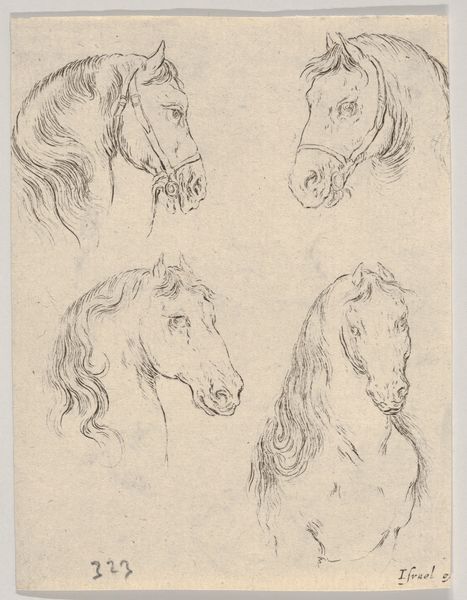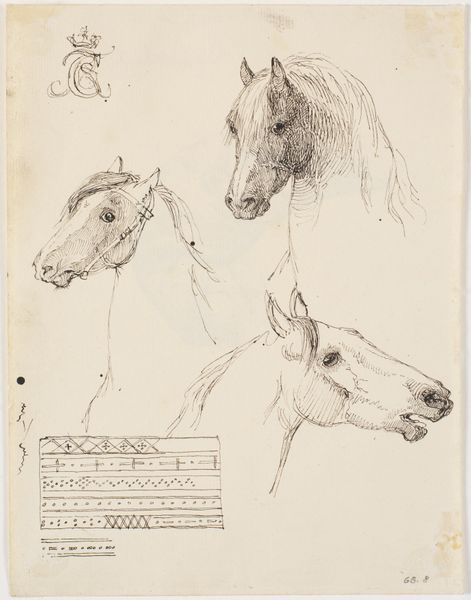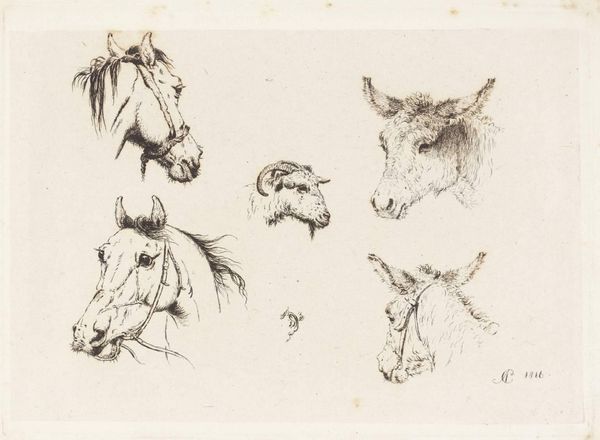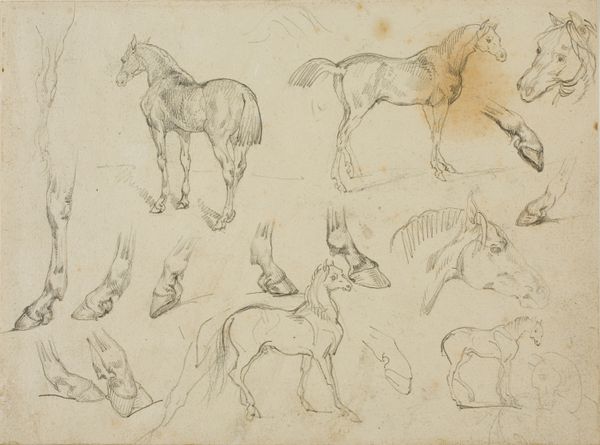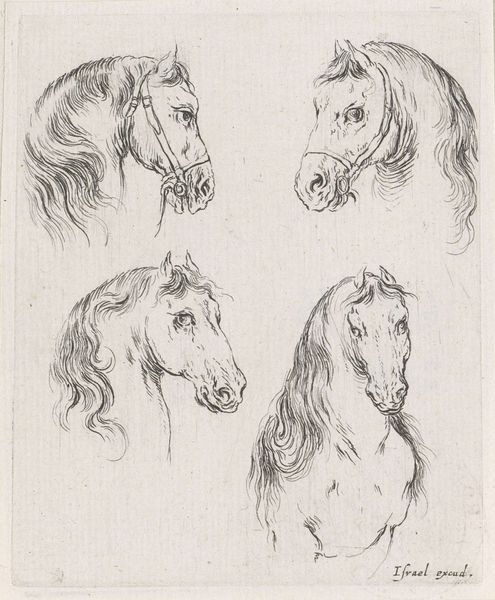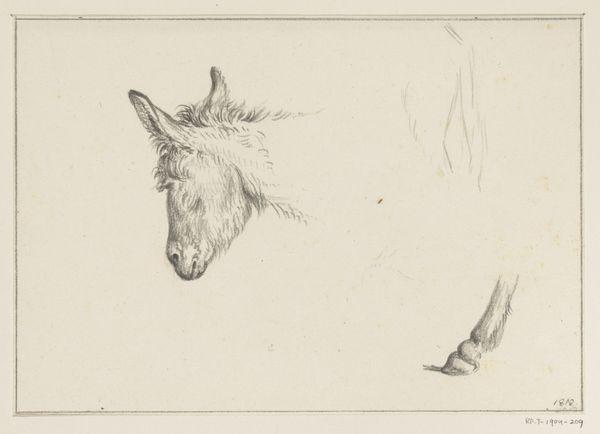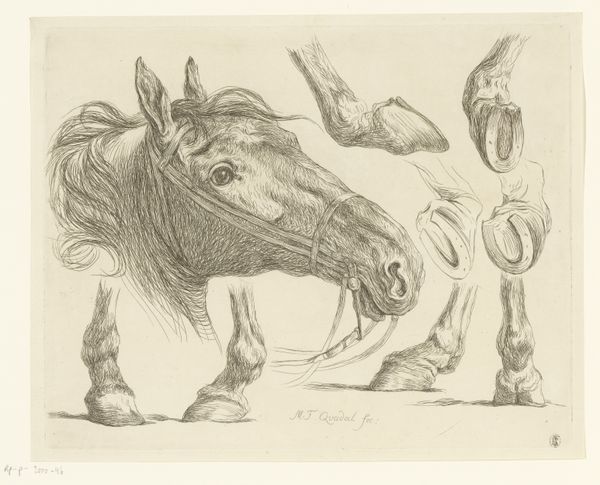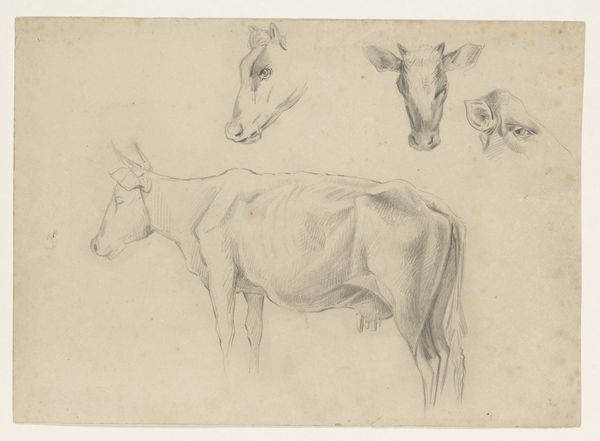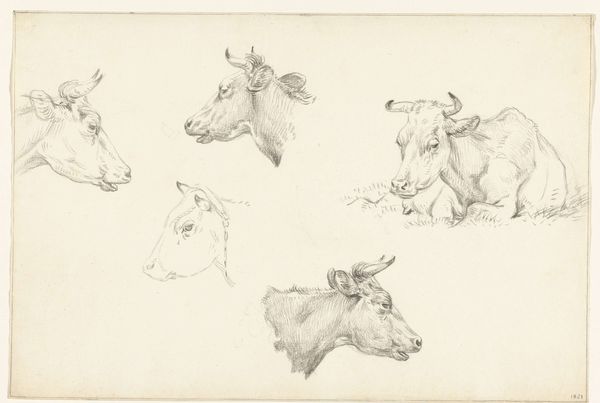
Plate 17: nine studies of horse heads, from 'Various heads and figures' (Diverses têtes et figures) 1650
0:00
0:00
drawing, print, engraving
#
drawing
#
baroque
# print
#
form
#
engraving
Dimensions: Sheet: 3 5/8 x 2 15/16 in. (9.2 x 7.5 cm) Plate: 3 1/4 x 2 5/8 in. (8.2 x 6.6 cm)
Copyright: Public Domain
Editor: Here we have Stefano della Bella’s "Plate 17: nine studies of horse heads, from 'Various heads and figures'," created around 1650. It's a series of engraved studies, and what strikes me is the variety of expressions he captures. What do you see in this piece beyond just equestrian studies? Curator: This piece speaks volumes about the power dynamics inherent in the relationship between humans and animals. Horses in the 17th century were not merely beasts of burden, they were symbols of status, tools of war, and integral to the aristocratic lifestyle. Look at the bridles, the reins – these are instruments of control. Consider how these representations reinforce social hierarchies and the subjugation of nature. Editor: So, you’re saying that even seemingly benign sketches of horse heads reflect broader issues of control and power? Curator: Precisely. The Baroque period, with its emphasis on grandeur and control, used animals to further elevate the elite. Della Bella’s delicate lines belie a complex narrative of dominance. Who is in control, and at what cost? Consider, too, the role of the artist as observer and interpreter – are they complicit in these power dynamics, or are they offering a subtle critique? How does this visual vocabulary persist even in our contemporary moment? Editor: That gives me a lot to consider – I hadn’t thought about the social implications embedded within these studies. Thanks for opening my eyes. Curator: Art, even studies of horse heads, can be a potent lens for understanding historical and ongoing power structures. It encourages us to question the relationships we have inherited and consider how we can disrupt inequalities.
Comments
No comments
Be the first to comment and join the conversation on the ultimate creative platform.
